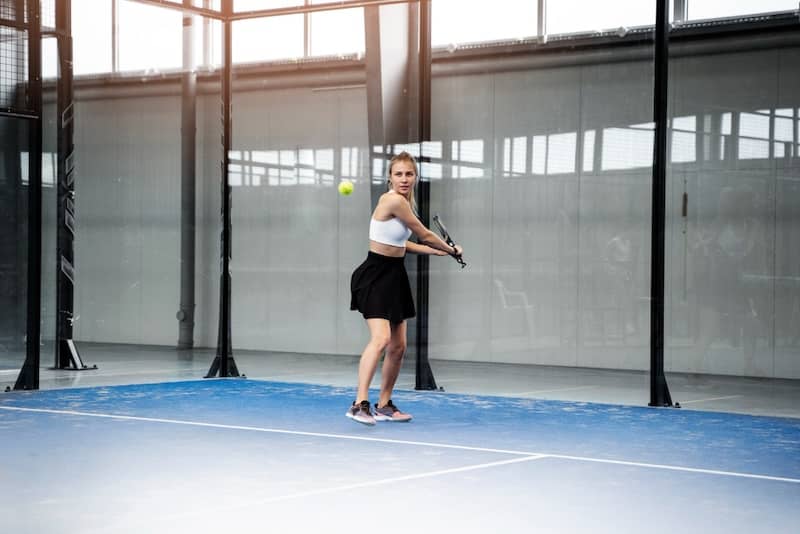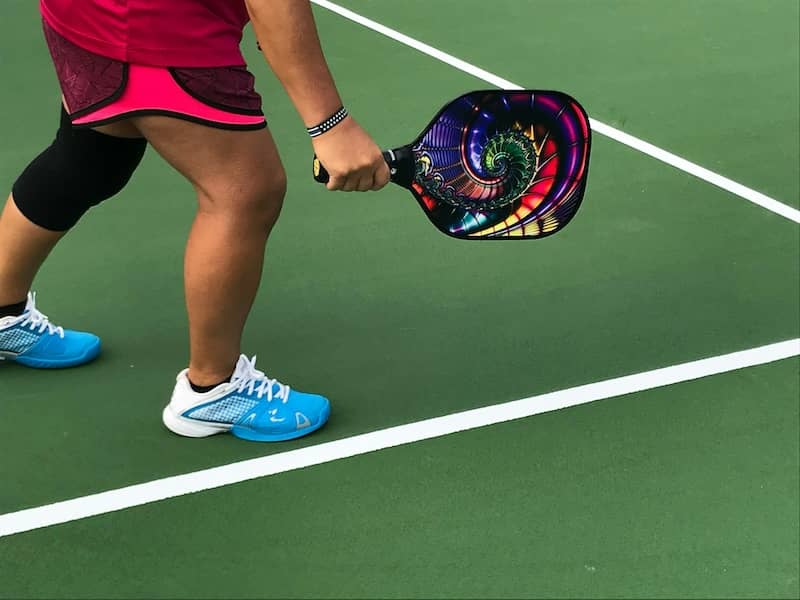The pickleball landscape is evolving, with the lob emerging as a prominent tactic on the courts. As this strategic shot gains in popularity, it becomes increasingly crucial for players to equip themselves with effective methods to counter and overcome opponents who specialize in lobs.
Perhaps you are looking to increase your pickleball rating, aiming to win more weekend matches or improve your overall pickleball strategy. Whatever your reasoning, if you want to rise to the top, you need to know how to respond to lob shots.
There are three essential strategies for triumphing over lobbers: avoiding the lob, anticipating lob shots, and achieving a powerful response shot. We will explore each of these and how you can integrate them into your pickleball game.
What’s a Lob?
Lobs are lofted shots that send the ball high and deep into the opponent’s court. These soaring shots catch the opposition off guard, forcing them back toward the baseline of their playing area. Lobs keep players out of the kitchen (aka non-volley zone or NVZ), deep in their court, where it is more challenging to hit quick shots and steep angles that are more difficult to return.
Lobs are also an effective defense. They buy you time to regain a central position on the court or set yourself up for an offensive shot. That’s good when you are doing it, but not great when it is your opponent doing the lobbing.
Strategies to Triumph Over the Lob
Okay, so we know what a lob is. What can we do about it? Our pickleball tips are just what you need to rob the lobber of victory. Here’s your three-part strategy for triumphing over the lob:
1. Avoid the Lob
The best way to deal with the lob is to avoid it in the first place. If your opponent can’t hit lob shots, you won’t have to counter them.
You can minimize the opportunities the other player has for lobbing by hitting to their backhand. Most players will only lob from their forehand side. Whether they are a lefty or a righty, you decrease the chances they will return your shot with a lob if you focus on their backhand side. If your opponent demonstrates a preference for a lobbing strategy, aim for their backhand.
Players can hit lobs from anywhere on the court. However, it is more challenging to hit a lob shot from near or behind the baseline. That area creates angles that make lobs difficult. If you want to prevent your opponent from lobbing, use your ball placement to keep them near, at, or behind the baseline. If you keep them deep in their court, you won’t face many lobs.
2. Anticipate the Lob
Like poker players who fiddle with their chips or avoid eye contact when bluffing, pickleball players often have “tells” that reveal their next strategy. If you pick up on these signs, you can predict their gameplay. Additionally, most picklers have habits and preferences. As a result, they tend to hit specific shots in certain situations.
Pay attention to your opponents’ behaviors. The way they backswing may indicate when a lob is forthcoming, giving you an extra moment to prepare. They may have specific footwork patterns, planting their feet in the same stance before each lob. Even the angle at which they hold their paddle can scream, “Lob incoming!” once you recognize their tells. A low backswing paired with a relatively flat paddle angle is a common indicator that a player is planning to lob.
Perhaps after the first few points of a game, you notice that a player prefers to lob when faced with a forehand-side dink. Or maybe they go for the lob if a rally has been continuing for more than a few exchanges. Whatever the habit, once you recognize it, you have an advantage.
If they do hit a lob, take a moment after the point to recall the exchange. What was their stance before the swing? What kind of shot was it? Noting these tells helps you see the emerging patterns. Then, you can easily spot the signal of an incoming lob and prepare yourself accordingly.
3. Respond to a Lob
No matter how much you try to minimize the opportunity for a lob, they will happen. Whether you’ve anticipated them or not, some lob shots are going to come your way. Your pickleball arsenal needs to include a strong response. You can let the ball bounce and hit off the bounce, but a more aggressive, powerful response is an overhead shot.
NOTE: Even though the overhead is often the stronger choice, be mindful about always responding to their lobs in the same way. Just as you look for their patterns and tells, they will be looking for yours. That means you need to change up your response often enough to keep them guessing.
Returning a Lob
Develop a Strong Overhead Lob-Return Shot
Here are the fundamentals of an overhead lob return:
- Start by rotating your body sideways. Make sure you are well outside the NVZ.
- Raise your pickleball paddle until it is about head height. Your elbow should be high, and your non-paddle hand should be pointing toward the ball and out in front of your body.
- Move your feet sideways to shuffle into position.
- Swing so that you hit the ball in front of you with your arm fully extended. For right-handed players, you should aim to make contact at roughly the one o’clock position relative to your body. For lefties, it should be 11 o’clock.
- A great overhead will finish with a follow-through that goes down and slightly across your body. Go from that one o’clock position to seven or 11 o’clock to five.
Let the Lob Bounce
For times when you can’t or don’t want to respond with an overhead shot, let the ball bounce before you return it. The ball may be out of your reach for an overhead, or perhaps you are trying to mix up your strategy. Whatever your reasons for a bounce response, you need to be able to hit a bounced-lob return effectively.
Most people prefer to hit a drop shot after a lob bounce. If your drop shot lands in their NVZ, you and your partner will have time to reset and move close or into your own NVZ. A drop shot also allows you the most time to chase down the lob and get into position since you can hit it after the pickleball has dropped low from the bounce.
Another option is a drive shot. This return can be challenging as you have very little time to get into the proper position. However, that also means it is likely not what your opponent is expecting. If you can execute it well, a drive shot may give you an element of surprise that leads to a winning point.
Finally, you can return a bounced lob with a lob of your own. If you have no time to prepare and position yourself correctly, this may be your only choice.
There you have it: your best strategy for robbing the lobber of victory. Avoid, anticipate, and achieve the perfect response. If you do those things, you will find great success against lob shots.



